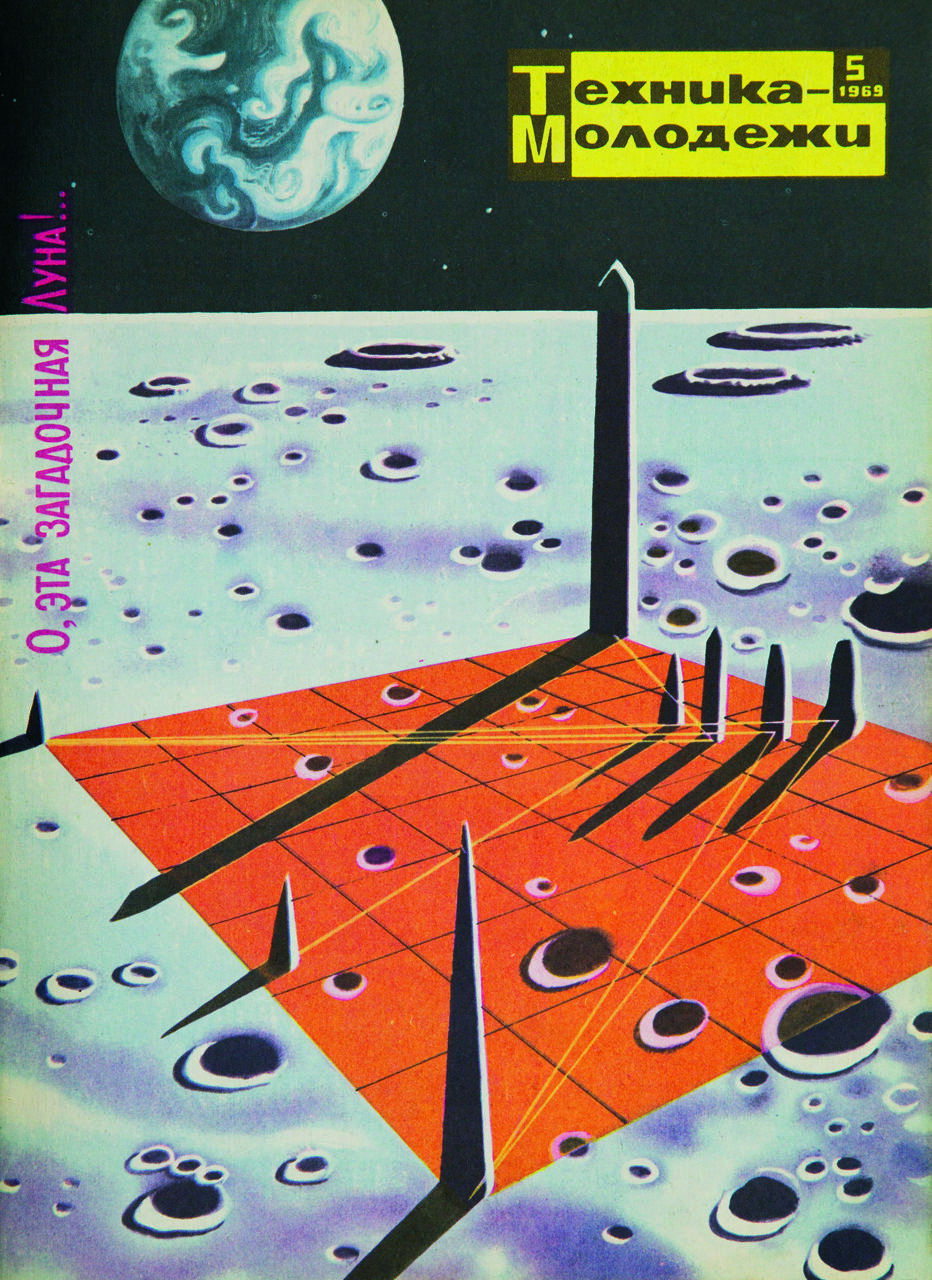skip to main |
skip to sidebar
From
Atlas Obscura:
A tall stele rises from a
deeply cratered surface, casting a long, ominous shadow past a row of
smaller towers. Straight lines connect the structures to each other,
like streets on a map or the projected moves in a game of cosmic chess.
The Earth floats serenely in the dark sky, next to the logo that reads Tekhnika—molodezhi, Russian for Technology for the Youth,
a Soviet popular science magazine that launched in 1933. The magazine
cover, from 1969, illustrated an article highlighting photographs from
Luna 9, the Soviet unmanned spacecraft that was the first to survive a
landing on the Moon a few years earlier.
This imagined moonscape is one of more than 250 otherworldly images from the upcoming, visually delightful book, Soviet Space Graphics: Cosmic Visions from the USSR,
by Alexandra Sankova, director and founder of the Moscow Design Museum,
which collaborated on the book with her. Space Age artwork proliferated
alongside the Soviet Union’s popular science magazines—there were up to
200 titles at their peak—during the Cold War. From the mid-1950s to the
mid-1970s, in particular, the cosmos became a battleground for world
powers jockeying for global dominance. Though the Space Age began with
the successful launch of the Soviet Union’s Sputnik 1, it was the United
States that, just three years after Luna 9, first put a man on a
moonscape like the one on the magazine cover.
Soviet illustrations, even ones with
whizzing UFOs and bafflingly futuristic machines, were not drawn to
entertain as much as to educate and promote the Communist project. An
open letter from cosmonauts to the public in a 1962 issue of Technology for the Youth
read “… each of us going to the launch believes deeply that his labor
(precisely labor!) makes the Soviet science and the Soviet man even more
powerful, and brings closer that wonderful future—the communist future
to which all humanity will arrive.” Scientists, astronauts, and aircraft
engineers were treated like legends, since outer space was such an
important idea in the Soviet Union, according to Sankova. “Achievements
of the USSR in the field of space have become a powerful weapon of
propaganda,” she says. Soviet citizens lived vicariously through such
images, and even the more surreal and fantastical visuals—living in
space, meeting new life forms—demonstrated that the idea of cultural
revolution need not be limited to Earth. (Read more.)
Share


















No comments:
Post a Comment